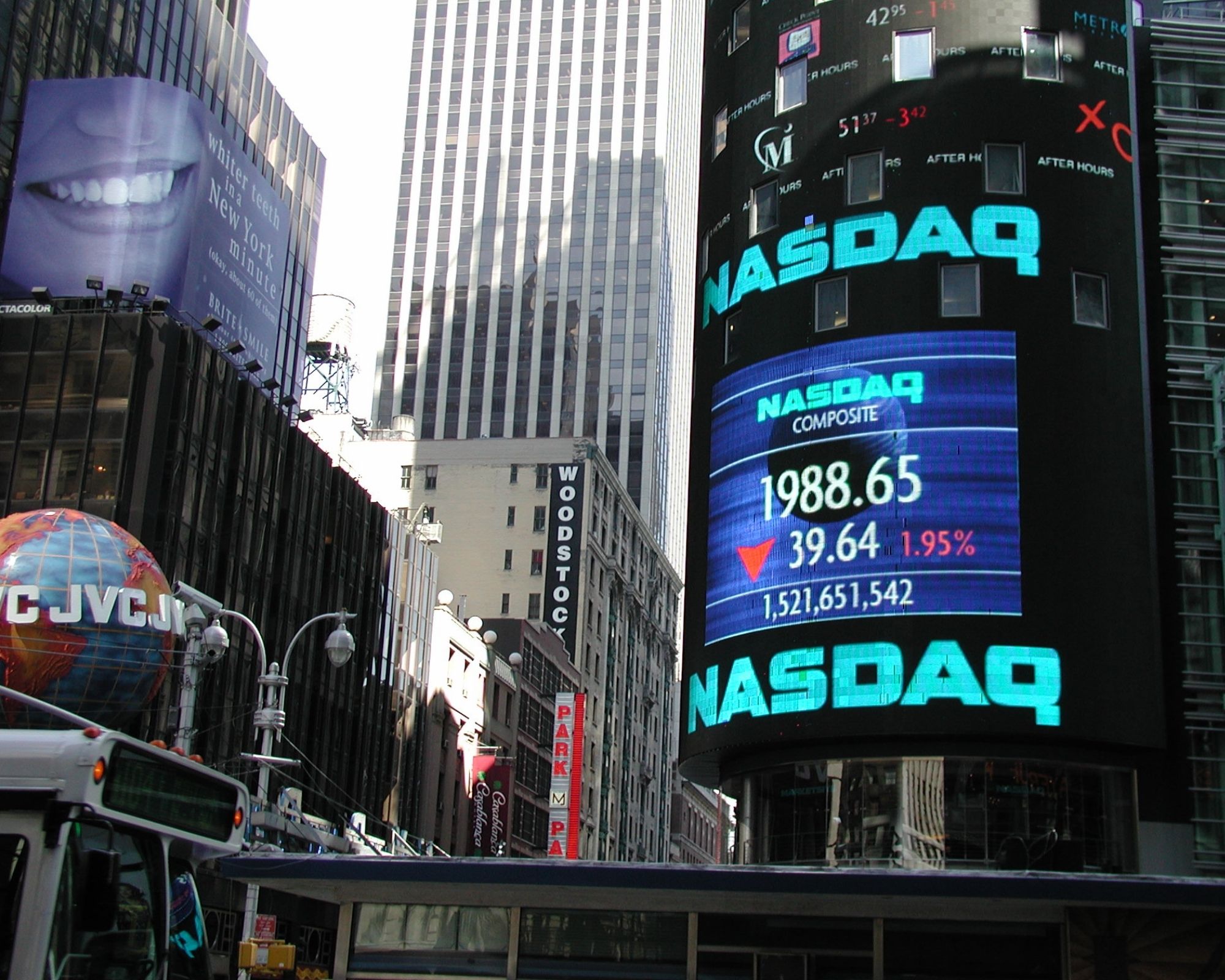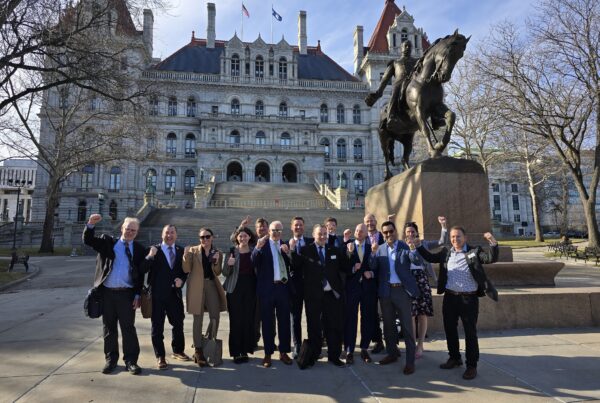The horizon just got even brighter for green businesses looking to tap into the market’s booming appetite for sustainability. As reported by Frances Schwartzkopff of Bloomberg, Nasdaq announced a new ‘green equity’ label program in June of 2021, to be launched in its Nordic markets before potentially expanding to American markets if well received. Essentially, Nasdaq has created a set of concrete standards that companies must meet to apply for a “green equity” label, similar to how the agricultural industry works with a defined set of standards that determine whether a product can be labelled “organic” when sold to consumers. Nasdaq has outlined their own set of standards that define what it means for a company to be considered “green.” Companies that can demonstrate that they generate over 50% of their sales from climate-friendly activities, among other considerations, will be eligible to receive Nasdaq’s green label and participate in green equity trading on their platform. Green equity, which has only existed since May 2020, is generally offered in the form of shares issued by listed companies that are certified as environmentally friendly. This label program is a big first step in giving investors more choice and more confidence when choosing to put their money into sustainable businesses.
Nothing like this platform has existed before. The current ambiguity of terms like “sustainable” and “green” has hampered the growth of new businesses trying to sell their sustainability angle, as they fight for consumer trust amid a culture of greenwashing. But if Nasdaq’s new framework succeeds in the Nordic region, it may well be adopted in the U.S. as a way for American investors to pledge more dollars to sustainable businesses with confidence.
To explain the new program and interpret for us what it might mean for both sustainable businesses and sustainable investors, we tapped Sustainable PR’s Financial Media Contributor, finance writer David Evanson. With a background and a degree in finance, Evanson has provided consulting and editorial services for the financial services industry for over 35 years, with work appearing in media outlets such as Forbes, Business Ethics, Barron’s, Kiplinger, and The Hill. As Financial Media Contributor for Sustainable PR, Evanson consults on content and financial media on behalf of our clients. Conducting the interview is Nicole Hallberg, Sustainable PR’s Content Marketing Contributor.
Hallberg: Let’s start with a translation for those without a background in finance: What does it mean that Nasdaq is opening up a green equity label program? What is green equity? And is that something that already exists? Is it a subsidiary of Nasdaq or something completely different?
Evanson: Very generally, Nasdaq is offering green designations for qualification to trade on two of their Nordic exchanges. For background, it’s sometimes hard to conceptualize that stock exchanges are businesses—but they are. There are a couple of stock exchange businesses in the world, and they have exchanges in most industrialized economies. Nasdaq is one of them. So yes, they’re launching this new listing standard and offering it first in their Nordic stock markets. If they get some traction in these Nordic marketplaces, we’ll probably see more of these green listing standards in different geographies.
Why does a financial product get a pilot test somewhere? Is there a reason you can see for why the green label isn’t just rolling out everywhere right now?
Evanson: Well, I can only speculate why. The first reason is that Nordic countries have a longer legacy and commitment to environmental, social, and governance standards. The second reason is that the United States markets are more complex with significantly more trading volume, which could make understanding the impact of green designations much more difficult to discern. So I would offer the Nordic markets as a good testing ground for this.
Because there’s less competition in those markets and more familiarity with ESG products in general?
Evanson: Once you put a product in the hands of real consumers, you learn things that you never imagined. Those lessons can be very valuable when you roll out products in larger markets.
Say on the Nasdaq market, in the United States, there’s approximately 3,000 companies, right? There are plenty of exchanges around the world that have 100 companies or less. The Nordic markets where the green label designation is being rolled out have about 650 listed companies. It’s not to say these marketplaces are less sophisticated, but rather their smaller size makes them a good testing ground.
One of the big challenges with ESG investing, which was covered in the Bloomberg article, is that it has proven very challenging to develop standards that measure compliance or progress on those variables. And nobody has that silver bullet.
Everyone who is currently working to establish these standards are adding to the body of knowledge about which standards work and which don’t meaningfully measure complex things like sustainability and corporate responsibility. Eventually the markets, regulators, and investors will coalesce around a set of standards that seem successful. So, the fact that Nasdaq is opening a marketplace that is going to trade green products based on a defined set of standards is an important step forward for the industry and the future of green investing.
What does “successful” mean in this context?
Evanson: Having a successful standard for ESG means two things. One, that striving to meet that standard creates progress. So in ESG you have Environmental, you have Social, and you have Governance. Social has to do with a company’s labor and workforce policies, and those policies’ impact on workers and the broader society. So one standard or criteria for socially responsible investing that is often measured is the pay gap between executives and line workers, or maybe the existence of a gender pay gap. So if there are a set of measurable and agreed-upon standards that companies can work to meet, you can identify actionable opportunities for improvement in a company’s social impact.

David R. Evanson
Because if you can measure and identify a gender pay gap, you can work to eliminate it.
Evanson: Exactly. You could say that those are successful standards to measure social responsibility. But the other, more important thing is that the standards need to be able to be measured consistently on an apples-to-apples basis across companies.
When you look at one company versus another, you can look at standard metrics that they all track, and you can have a true and genuine comparison. It’s a little harder to do that when there is no agreed-upon standard. And not all companies can meet or are able to report to some of these standards, so you have to find a yardstick that works universally. But there is precedent for doing exactly that in financial reporting.
The publicly traded companies mostly report their progress in the same way. They’re recording how they recognize their sales in similar ways. They’re reporting about how their stock-based compensation is calculated in somewhat the same way. They’re reporting their tax liabilities in the same way. So, when you look at the financial reporting of one company compared to another, you have a pretty good idea of how they’re performing relative to each other. So with a green equity market, the evaluation is not just financial and how reliably a company is making a profit, the evaluation is also cultural, and how sustainably and responsibly a company is run, as measured by their adherence to these new standards.
Then what would be an example of a standard that you can apply to differently sized companies, even in different industries, to give you an accurate understanding of how they’re performing against each other in terms of sustainability and corporate responsibility?
Evanson: Here’s an example. A utility might have a number of power plants on their books, and those power plants all have varying levels of carbon emissions. You might want to compare them with a different kind of power company, one which does not generate power themselves but buys power from different sources and acts as a broker. So, it’s hard to get an apples to apples comparison of the emissions they are ultimately responsible for. One company is a direct emitter of greenhouse gases, and the environmental impact of the other one is indirect, but it doesn’t mean that the second company is actually doing a more proficient job of reducing carbon emissions .
Do you feel that the green label program amounts to an endorsement for the importance of ESG reporting from Nasdaq?
Evanson: More accurately, it’s a recognition that investors are paying attention to these standards. So let’s say you have a college in Texas with a billion dollar endowment. And you have a large group of activist students. They don’t want the endowment of their institution to help fund guns, pornography, alcohol, or pollution. So they demand that their endowment dollars be invested in companies with better standards. So then what happens?
The investment managers of the endowment are now charged with carrying out that mandate, assuming of course the student protest results in a decision to change the investment philosophy of the endowment. Well, how are the investment managers supposed to know which companies, of the 3,000 that are on Nasdaq, the 2,300 on the New York Stock Exchange, and the thousands outside of our borders, can fulfill that mandate for the purpose of investing that endowment? And so along comes Nasdaq with an exchange, populated exclusively by these companies. It makes the fulfillment of that mandate a lot more straightforward.
Remember that there is a liability involved for these managers for not adhering to the mandate they’ve been given by the endowment, and they are looking for solutions to limit their liability. In this light, a green designation is a very helpful tool. Everyone is getting pulled forward in this, in trying to meet these investor demands.
Do you anticipate that these ESG standards, increasingly used to make investment decisions, will eventually hit critical mass and start being adopted everywhere? What happens then?
Evanson: I think that ultimately, ESG will take the world by storm. But I think it’s a long way off yet. And one of the reasons it’s a long way off is the current lack of defined standards, which we’ve talked about being very difficult to establish.
Then there’s cost. To adapt to these standards costs money, whether in the form of greater expenses or forgone revenues, which cuts into profit. All stocks trade on some multiple of their profits, so less profits means lower stock prices. But–there is a mitigating factor that augurs well for wider adoption and implementation of these standards.
One way to look at markets is as a place where investors go to buy stocks. But another way to look at markets is as a place where companies go to raise money. With the successful emergence of a green label program, you show to some degree that you have a market full of investors who want to invest in ESG compliant companies. Now the conversation isn’t just about the cost of conforming to ESG standards. The conversation becomes, “We can access more capital by becoming ESG compliant.”
Is that part of what’s driving compliance with ESG standards today?
Evanson: You’ve seen corporations get behind protesting these voter suppression laws, right? They recognize they can cater to their customers better if they are more aligned with how they want them to do business. So there’s some of that at play here. But the hope is, and the promise of programs like Nasdaq’s is that companies will opt for a more compliant posture because it gives them better access to capital.
Do you think that eventually, it’s actually going to become more expensive to continue polluting if it means your company will not have access to capital from these financial products?
Evanson: Yeah, eventually. I don’t know when that eventually is. But to go back to the accounting analogy, there is something called GAAP, which is Generally Accepted Accounting Principles. No public company can go public without adhering to those Generally Accepted Accounting Principles. Maybe someday, and hopefully someday soon, companies will not be able to access the markets without adherence to a well developed set of ESG standards.
Are we waiting for one precipitating event that’s going to make ESG the new basic standard? The new GAAP?
Evanson: This is going to be gradual. And you can see it is pretty gradual because the creation of these standards is gonna take a lot of time. Not only do these standards have to be developed, but a clear winner has to emerge. And so that takes time. But you see some sort of signposts in this and one of them is that not too long ago, maybe within the past decade, ExxonMobil was the largest company in the world. They’re not even close now. So their influence in the world in terms of profits, in terms of attracting investors, how many people they employ, and what those people are doing, has diminished greatly.
If this is where you think the wind is blowing, what information should businesses take away from this? What’s the smart move that companies should be making today if they want to succeed in this market?
Evanson: It will be important that you have documented evidence that this is an important part of your business. The reason is because more and more investors, whether they’re public investors or venture capitalists or private investors, want to be able to say that they did their due diligence and determined that the companies they invested in adhered to some form of ESG standards.
You want the investor to be able to check that box. Like the endowment that gets a mandate because of student activism, private equity firms, venture capitalists, and other fiduciaries are increasingly getting formal or informal ESG mandates from their investors, and they must abide by these mandates. So to the degree you have no initiatives with respect to ESG, you remove their ability to invest in your company. So in the end, companies are going to follow the money, and if it leads through better ESG standards, that’s where they’re going to go.”
Nasdaq is likely to be among the first of many in the finance industries to attempt to define a minimum standard for what can be sold as “green”. This may well help level the playing field for startups and entrepreneurs with sustainable business models–when everyone has to meet the same clearly defined set of standards to be labelled as a “green” investment product, new green businesses don’t fight as hard to sell their sustainability stories. Smaller and newer green companies can’t be as easily outgunned by competitors with less climate-friendly practices but bigger marketing spend at their disposal. Another promising factor is that Nasdaq will also be offering a green equity transition label for companies working to meet the requirements. This may help further incentivize companies who are trying to implement better practices, but struggling to justify the transition costs. A handful of companies have applied for the green label in the Nordic program thus far, but more are expected to follow amid new EU requirements. The success of the launch will be a strong barometer for the future of the sustainability industry. We’ll see how many companies are ready today to recognize the opportunities in ESG, and capitalize on them by greening up their business practices and their messaging. Someday soon, it will be a simple case of “follow the money.”
Thank you to David Evanson for his time and insight into the future of ESG and sustainability compliance.





